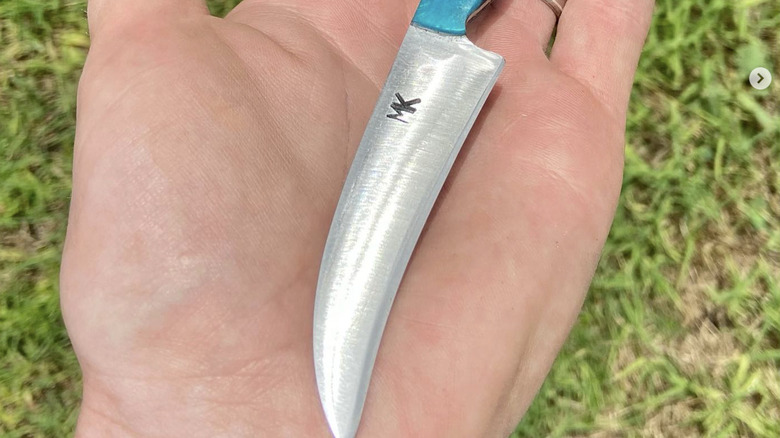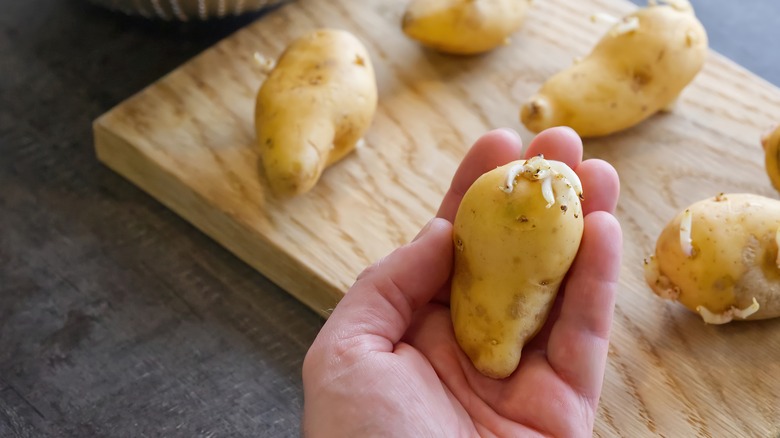What Is A Tourné Knife And What Can You Do With One?
Kitchen equipment and techniques can often feel overwhelming; there are so many gadgets and machines now that it can be hard to remember how to use everything. And it's worth remembering that it's not just advanced technology that falls into this trap: There are so many different types of knives (many of which have been used since time immemorial) that it can be difficult to keep track of which bladed instrument serves which purpose. Sure, we all remember what a bread knife does (although it has more uses than you'd think), but what about something like a tourné knife?
As it turns out, a tourné knife isn't nearly as complicated or difficult to use as you might fear, and you should definitely have one on hand. Every kitchen tool has its purpose, and this is no exception. Simply put, a tourné knife is used for any sort of turning cut — "tourné" means "turned" in French. So any time you're going to be making a circular cut, this is the knife you should use.
Tourné knives have a variety of uses
So when would you make a circular cut? In lots of situations, actually. You could use a paring knife to get the eyes out of potatoes, but why do that when you can use a tourné knife, resulting in significantly less time and effort? You can also use it to core the tops of strawberries or tomatoes, seamlessly removing the parts you don't want to eat with a minimum of effort.
The uses of a tourné knife, often also referred to as a bird's beak knife, don't stop there, either. They're also useful for things like peeling potatoes, onions, or shallots; just hold your thumb against the skin and drag the knife towards you, letting it do all the work. You can also use it as a bar knife because it's perfect for creating citrus peels for drinks that require, say, a lemon twist. You can even use it to peel grapes, a notoriously tricky feat of cooking preparation. Speaking of fine detail work, tourné knives are also great for deseeding vegetables or even deveining shrimp.
Tourné knives produce uniform cuts that look impressive
It's true that a tourné knife can be trickier to use in certain contexts than other tools; peeling potatoes is easier with a peeler, for instance. But the benefit of a tourné is if you know how to use one, you wind up with extremely uniform cuts. It's perfect for when you really want to impress someone with your culinary prowess. It's also a great way to train your knife skills, which are one of the foundational elements of great home cooking.
Making the most out of your kitchen utensils always comes down to knowing what you're working with. Though various types of knives can seem intimidating, many of them aren't as imposing as they may seem and will save you a ton of time and effort once you know the proper uses for each of them — including the tourné knife. You shouldn't be afraid to learn new things in the kitchen, and this is no exception.


